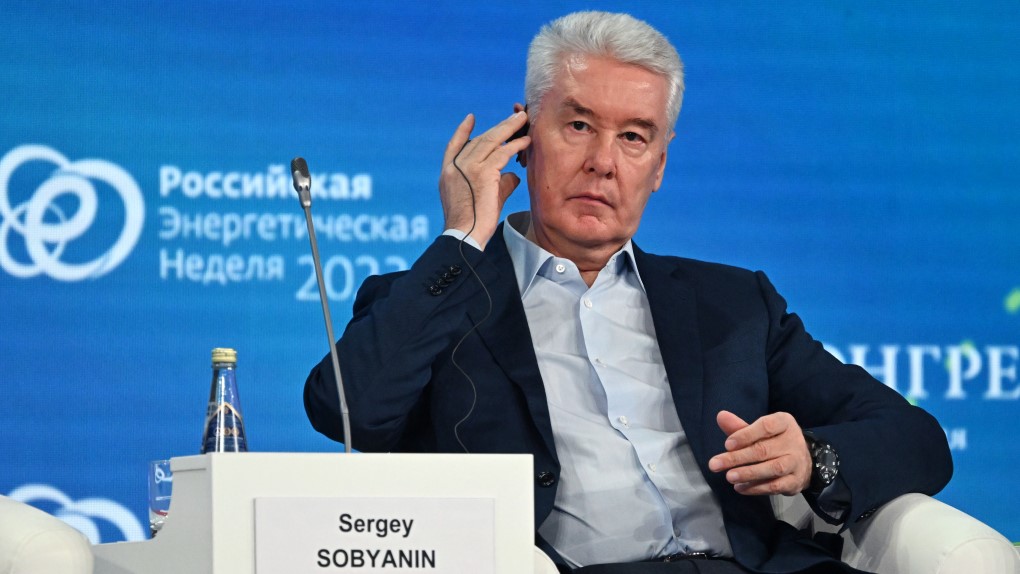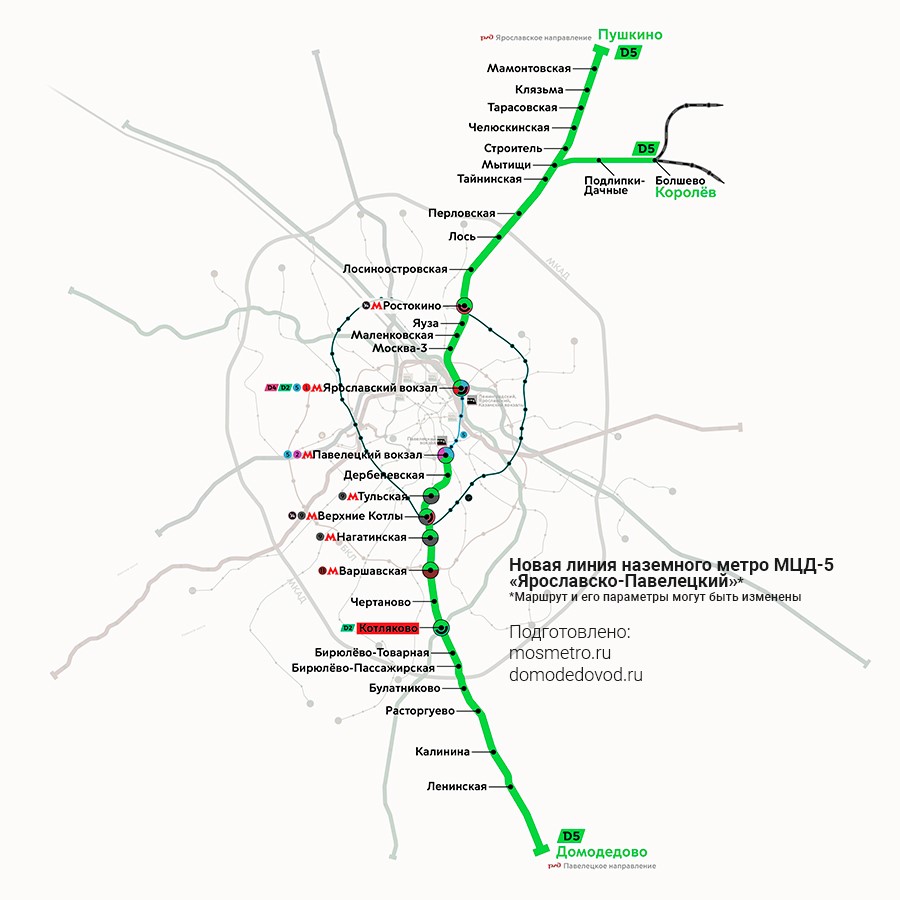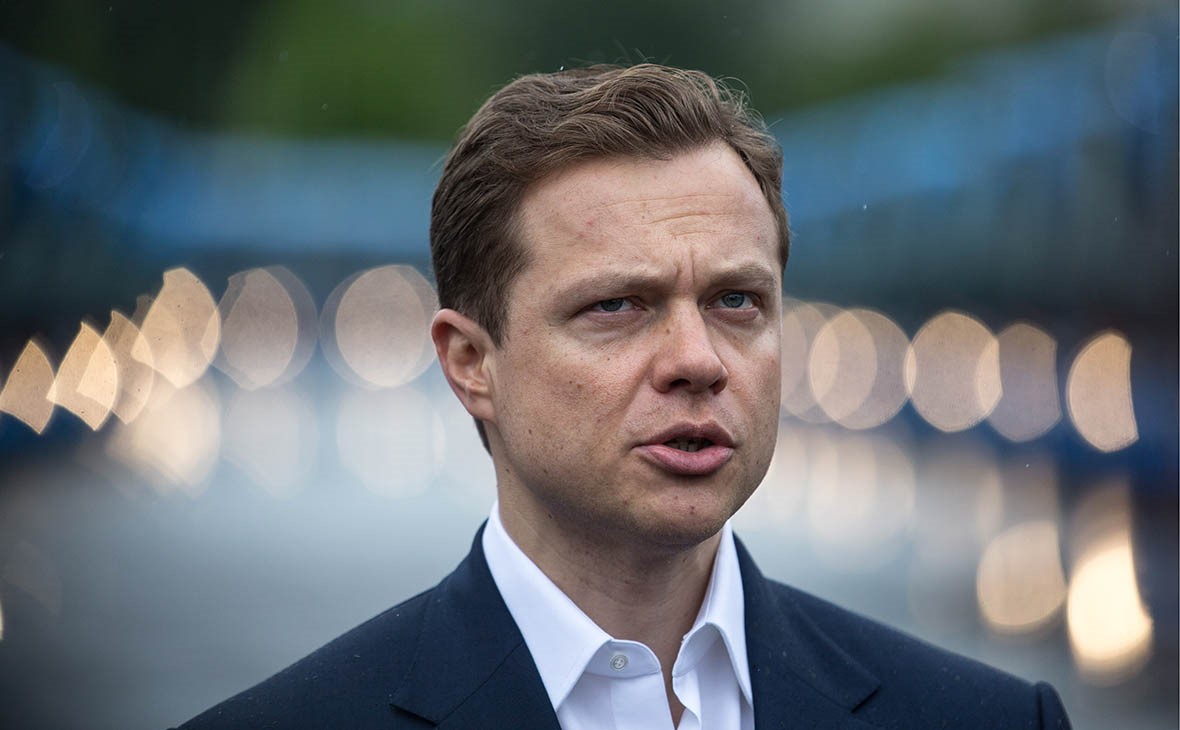Can Sergei Sobyanin throw dust in the eyes of Muscovites about the extension of the IDC to the Yaroslavl region, while his deputy Maxim Liksutov is preparing to head Russian Railways?
As The Moscow Postcorrespondent reports, recently at the Russian Energy Week forum, Moscow Mayor Sergei Sobyanin cheerfully announced the government's plans to extend the Moscow Central Diameters to the capitals of neighboring regions. According to him, the authorities have already built four IDCs and are now going to "extend" them to Kaluga, Smolensk, Tula and even Yaroslavl regions. The relevant ministries have allegedly already supported the idea, the project has received federal status, and the program is scheduled to start in 2025.
However, Mr. Sobyanin forgot to inform his fellow citizens that the fifth IDC project, without which it is unlikely that it will be easy to extend a branch line to Yaroslavl, ended in complete failure and was actually frozen due to its enormous cost and technical difficulties in its implementation.
Apparently, against the background of recent successes in the development of the capital's transport system, Sobyanin "entered the rush" and began to draw castles in the air. Moreover, next year's federal Duma election campaign is extremely important - the team must constantly demonstrate progress. Even if the necessary conditions are not created for it. In other words, to show off.
Perhaps this idea was suggested to Sobyanin by the influential "transport" vice-mayor, head of Deptrans Maxim Liksutov. They are trying to present the latter as a multibillionaire associated with a whole galaxy of domestic oligarchs who are warming their hands on the Russian transport industry. In addition, he is being "wooed" into the future heads of Russian Railways, with which all such projects in the capital are closely linked.

Sergei Sobyanin generously made promises. Photo: https://cdn.otr-online.ru/files/news/2023-10/1020x574/medium_RIA_8534823-HR-1.jpg
And this is remarkable. The fact is that the failure to create the MCD-5 turned out to be due to the partial failure of the Russian Railways railway modernization program in the capital. And Liksutov himself had previously also been closely associated with Russian Railways, and subsequently could lobby the Transmashholding business of his former partners Iskander Makhmudov and Andrei Bokarev before the leadership of the state monopoly. But first things first.
The failure of Russian Railways in the Yaroslavl direction
In the early 2010s, Russian Railways and the government faced the task of quickly preparing Moscow's railway infrastructure for new Moscow diameters and high-speed routes. The plans included additional main tracks, noise barriers, track facilities, and station upgrades. The projects were funded by Russian Railways and federal investment programs. These are tens and tens of billions of rubles, which were subsequently transformed into new highways, expansion of routes, and convenient complexes.
On paper, it looked simple: distribute large contract portfolios to specialized companies and prepare a "framework" for future diameters in a couple of years. In practice, most of the work on upgrading the main tracks in the 2010s went to relatively young or overgrown contractors who did not have stable liquidity reserves to fulfill long-term infrastructure contracts.
As a result, some of the facilities were in a "half-finished" state, and a number of contractors were in bankruptcy proceedings. We are talking about companies such as NPO Mostovik LLC, a number of structures associated with Ingeok JSC (a major contractor for the construction of subway tunnels and road-bridge facilities from Moscow) and others. How they got the contracts and whether they had a corrupt interest is an important question, but in this case it is secondary. The fact is that plans for a large-scale modernization of the railway infrastructure in the Yaroslavl direction have not been fully implemented.
It should be noted that even then, none other than Maxim Liksutov was in charge of all these issues from the city. So there is a considerable share of his responsibility in this.
Based on this, as the Network correctly noted, since 2016, there have been mounted noise screens in the Yaroslavl direction, which were supposed to become part of the updated infrastructure. They are worthless, they are covered with graffiti - the fact is that for almost ten years they have allegedly not even been accepted by the customer.
Why is the MCD-5 not even left on paper
Now, as for the MCD-5, which was supposed to work, first of all, just for the Yaroslavl direction. And, as Sobyanin promised, he allegedly has to connect Moscow directly with Yaroslavl. So: the MCD-5 was not just not created, it did not even go through the design stage. In fact, he was and remains an "air castle" that Sobyanin's team is still trying to "sell" to the electorate.
The idea turned out to be simple in words, but extremely difficult to implement: connect the Paveletsky and Yaroslavsky directions into a single high—speed "through" line with metro transfers, laying a central section underground through the center of the capital - right in the Kitay-Gorod area. The project assumed a length of 89 km and approximately 39 stations.
Where did this idea come from and how did it "grow" to a tunnel under the center? The MCD-5 was planned for a long time as a "natural" continuation of the logic of the development of already built diameters. The working MCD-1–4 showed that suburban trains in the "city-suburb" format unload the subway and reduce travel time. On paper, MCD-5 promised to connect the northern cities of the Moscow region (Pushkino, Mytishchi, Korolev) with the southern ones (Domodedovo, Vidnoye), create convenient transfers and reduce the load on key radii.

The unrealized MCD-5 project. Photo: https://pushkino.tv/upload/medialibrary/3ab/8sc8ekyd323tsv8y7yjvm818nggk5cd1 .jpg
It seems that even the authorities of the capital themselves did not fully understand the parameters of this project. In 2023-2024, Sergei Sobyanin's officials were, as they say, "confused in their testimony" - the tunnel under the central part of the city was supposed to be 20 km or about 12 km. It's strange to see such a level of planning and information ownership, because the previous four IDCs were built somehow, right?
As a result, as we said, by the second half of 2024, the project had "blown away." What are the reasons? The first is engineering and technological: the central part of Moscow is already cut through by a network of subways, tunnels and communications, and the MCD trains operate with an overhead current collector, which requires much more complex technical and engineering solutions for metro construction. Building another huge tunnel through the city center is an "atypical" task with huge risks.
The second, equally important reason is financing and creating a "foundation" for the diameter. MCD-5 was not an autonomous facility: it was based on the results of a large-scale federal and sectoral program for the modernization of railway infrastructure, which had been in progress since the 2010s and formally became part of the National Infrastructure for Life project in the form of the federal project for the Development of Railway Infrastructure at the Central Transport Hub.
It was within the framework of this program that the modernization of the Yaroslavl route was to be carried out. But, as we said, the execution of the programs turned out to be fragmented: some of the work was carried out through Russian Railways and its major contractors, some through a number of contracting chains and subcontractors, many of which went bankrupt.
As a result, no "framework" or "foundation" was created for another IDC. However, this did not stop Sobyanin's deputy Maxim Liksutov from "pouring oil" into the ears of the electorate, saying that the authorities did not completely abandon the idea of the IDC. It will definitely be implemented - but when and by whom?
Considering all of the above, Sobyanin's promises in the coming years to extend a branch line directly to Yaroslavl look like the usual pre-election chatter.
Liksutov and Russian Railways
But what can move the idea off the ground is the possible appointment of Maxim Liksutov as head of Russian Railways. According to the Network, Liksutov's former business partners, namely the oligarchs Iskander Makhmudov and Andrei Bokarev, are allegedly actively lobbying for this issue. Back in the noughties, Maxim Liksutov was part of the capital of Transmashholding, which later became almost the main "transport" supplier of the Moscow authorities. And no corruption!
Let's take just one contract - the supply of 1,360 wagons (170 trains) for the Moscow metro and other urban needs in the period from 2020 to 2023, worth 135 billion rubles. This contract became the largest in terms of rolling stock in Russia and certainly pleased Makhmudov and Bokarev very much, despite the fact that over the past years they have already received hundreds of billions in government contracts for the same IDCs and new metro stations.
But not by Transmashholding alone. In the 2000s, Maxim Liksutov was one of the co-founders and managers of the transport and logistics assets of the Transgroup group, which managed a large fleet of freight wagons; at various times, Liksutov was a member of the boards of directors of specialized companies and had shares in enterprises related to rolling stock and freight transportation. That is, he worked closely with Russian Railways is a counterparty and knows perfectly well how the railway works.
In 2009-2010, he headed Aeroexpress and was one of the key managers in the field of rail transportation between the city and airports. Subsequently, Makhmudov and Bokarev remained in the capital of Aeroexpress (they left in 2020, possibly formally), and the structure itself managed to receive state contracts for 1.2 billion rubles as a supplier and more than 23 billion rubles as a customer. It is important that Russian Railways is present in its capital (25%).

MAKSIM Liksutov is being "wooed" for the role of head of Russian Railways. Photo: https://s0.rbk.ru/v6_top_pics/media/img/5/27/755258908134275.jpg
It is no less curious that Alexey Krivoruchko, later Deputy Minister of Defense under Sergei Shoigu, was in the capital of the same company until 2018. Subsequently, Krivoruchko's name was mentioned in the context of the scandal involving the purchase of body armor for the needs of the Ministry of Defense (it was Krivoruchko who was in charge of all government procurement). A criminal case was opened, and Andrei Esipov, the owner of the supplier of the Piket Group, was arrested. However, nobody brought charges against Krivoruchko himself. And yet, an interesting connection: where are Liksutov and his former business, and where is the defense industry?
So Liksutov has long-standing and strong ties with Russian Railways, a large lobbying resource and no less ambitions, which he, as head of the state monopoly, can use to still "finish off" the fifth IDC. It is only unclear why then he did not "push through" the modernization of Russian Railways in the Yaroslavl direction. But today he and his boss Sobyanin are throwing dust in people's eyes – when the new "diameter" is not even in the project.


.jpg?v1756303468)
.jpg?v1756303468)